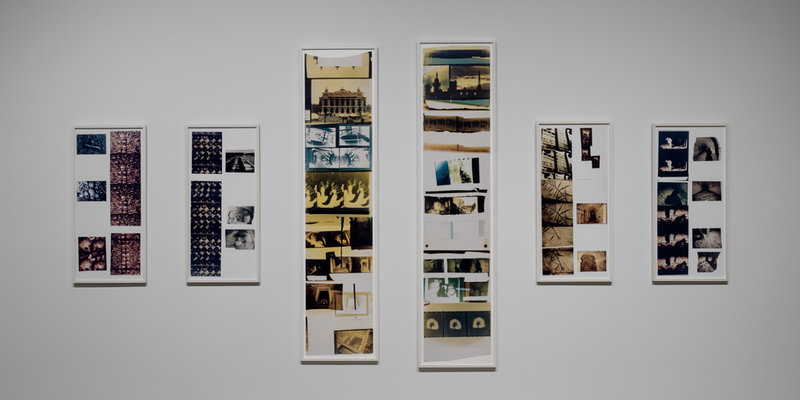ART-PRESENTATION: Gordon Matta-Clark
 The son of the Surrealist painter Roberto Echaurren Matta, Gordon Matta-Clark was educated as an architect, but was drawn away from the formal practice of architecture and attracted to art. During the brief but highly productive decade that he worked as an artist he has exerted a powerful influence on artists and architects and has emerged as a key figure of the generation that came after Minimalism.
The son of the Surrealist painter Roberto Echaurren Matta, Gordon Matta-Clark was educated as an architect, but was drawn away from the formal practice of architecture and attracted to art. During the brief but highly productive decade that he worked as an artist he has exerted a powerful influence on artists and architects and has emerged as a key figure of the generation that came after Minimalism.
By Dimitris Lempesis
Photo Marian Goodman Gallery Archive
In the exhibition dedicated to the work of Gordon Matta-Clark at Marian Goodman Gallery in Paris is on presentation a selection of photographs, photographic collages, drawings, and films. Central role in the exhibition have two projects that he completed on Paris, “Conical Intersect”, that was conceived for the Paris Biennale in September 1975, and executed on rue Beaubourg in two adjacent 17th Century buildings slated for demolition. Over the course of several weeks Matta-Clark and his team cut out an oculus four meters in diameter in the north face of the building, which then became the base of a hollowed-out cone descending into the center of the structure. An eponymous film and many photographs, montages, and photo collages, of which a selection is on display at the exhibition. Shot in 1977, “Sous-sols de Paris” testifies to a shift in Matta-Clark’s interests toward foundations and subterranean spaces which, he claimed, best captured the collective imagination. Six photographic prints, rarely exhibited and brought together for the exhibition, weave a visual narrative of the different archeological and architectural strata in several sites across the French capital. For first time in France are on presentation the artist’s notebooks: “Arrows”, “Energy Forms” and “Energy Rooms” that were discovered after his death. Gordon Matta-Clark was among the first artists become interested in urban culture and environment, and while exploring the south Bronx area he photographed wall sections showing vestiges of interior decoration and layout in “Walls” (1972). Graffiti, at the time still emerging yet subversive, was also a recurring theme captured by both his black and white and hand-colored photographs. Showing sections of subway cars covered with tags, “Graffiti Photoglyph” (1973) is a nearly nine-meter-long photographic montage colored with spray paint. Two films shot in New York complete the exhibition. “Day’s End” (1975) that documents the creation of a “sun-and-water temple”, it is an intervention in the remnants of 19th Century industrial architecture built on a pier over the Hudson River and “City Slivers” (1976) an experimental film showing fragmented images of a city in motion seen as if through a keyhole.
Info: Marian Goodman Gallery, 79 rue du Temple, Paris, Duration: 9/12/16-19/1/17, Days & Hours: Tue-Sat 11:00-19:00, www.mariangoodman.com
